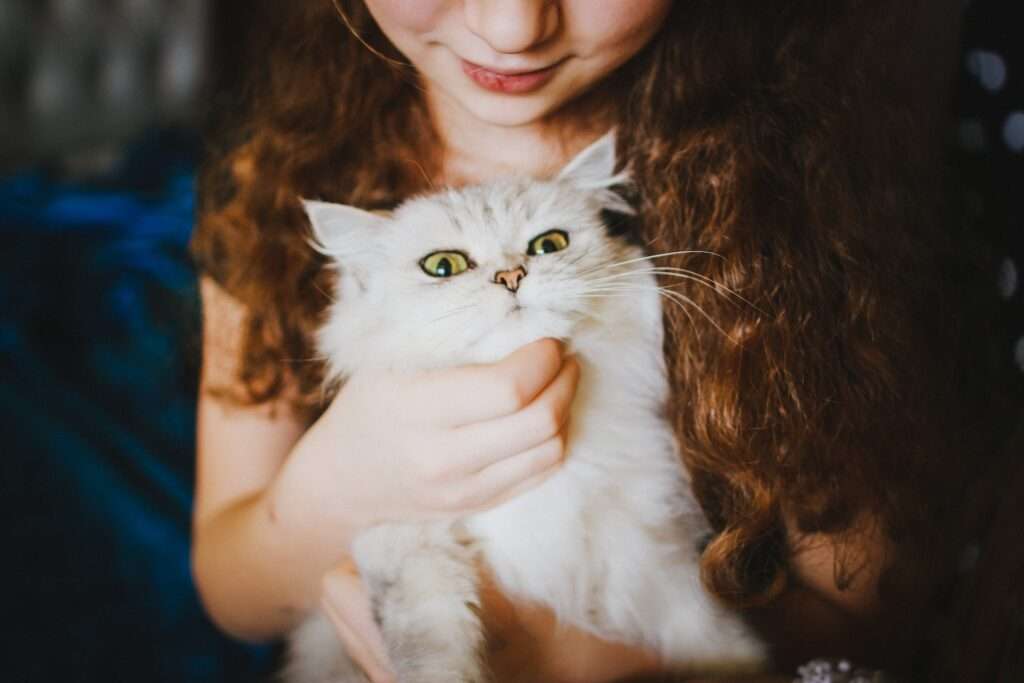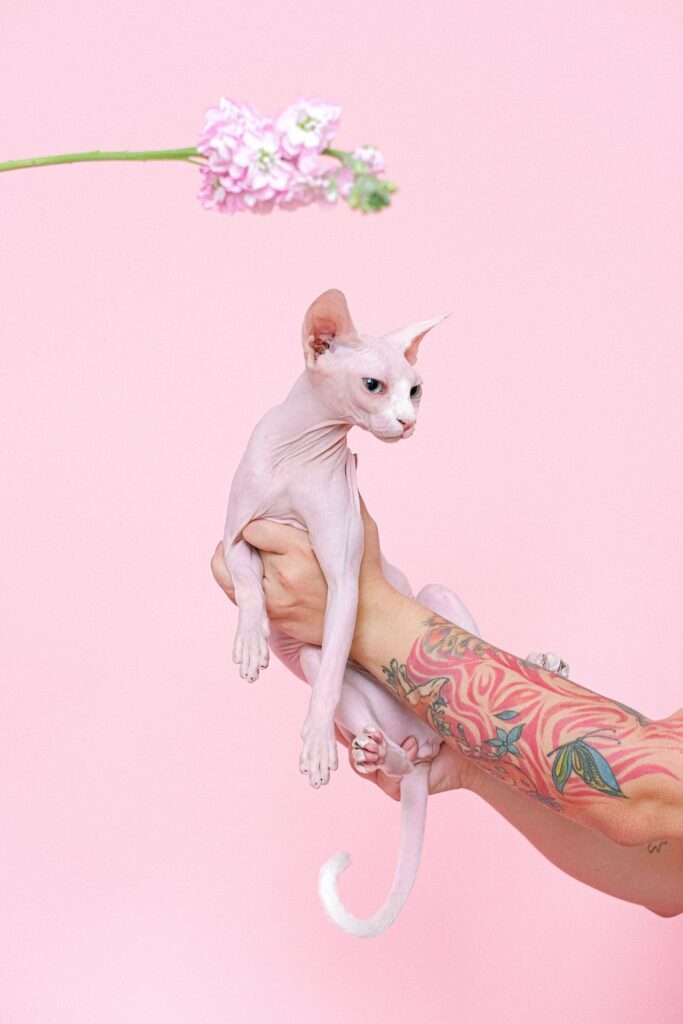Do Cats Shed? Everything You Need to Know About Your Feline Fur!
As a cat owner, you’re probably no stranger to the occasional clump of fur on your couch or clothing. Shedding is a common occurrence in cats, but you may be curious as to whether do all cats shed, what amount of shedding is typical and how to manage it effectively.
Let’s explore the topic of cat shedding in detail, covering the reasons behind why cats shed, what constitutes normal shedding, and effective methods for managing it. We’ll also explore some common health concerns related to shedding, and provide additional resources for managing shedding in your own cat. So let’s get started!
Why Do Cats Shed?

Cats are adored as pets for a multitude of reasons, although their shedding can occasionally lead to frustration among their caretakers. Understanding why cats shed is an important step in managing this natural process.
Biologically, cats shed their fur to regulate their body temperature. Just as humans perspire to cool down, cats shed their fur to release excess heat and keep their bodies at an optimal temperature. Shedding also serves as a mechanism for cats to eliminate dead or damaged fur, making room for new, healthier hair growth.
Shedding in cats is also influenced by genetics, age, and health. Certain breeds of cats are more prone to shedding, such as Persians and Maine Coons, due to the length and thickness of their fur. As cats age, their fur may become thinner and more prone to shedding. Health issues such as allergies or hormonal imbalances can also contribute to excessive shedding in cats.
While shedding is a natural and necessary process, there are ways to manage it and minimize its impact on your home. Regular grooming plays a crucial role in reducing shedding. Brushing your cat’s coat helps to remove loose fur before it ends up on your furniture or clothes. This not only keeps your home cleaner but also promotes healthy skin and coat by distributing natural oils and preventing matting.
Types of Cat Fur
When it comes to cat fur, there’s a variety of types, and each one contributes to shedding in its own unique way. Familiarizing yourself with these fur types can help you better understand your feline friend’s shedding habits and take appropriate measures to manage them effectively.
First, we have guard hairs. These are the longer, stiffer hairs that give cats their distinct appearance. Guard hairs serve as a protective layer and provide insulation for the cat’s body. While they play an important role in safeguarding your cat, they can also contribute to shedding.
Next, we have awn hairs. These hairs are shorter and softer than guard hairs and are nestled beneath them. Awn hairs aid in insulation and offer additional cushioning. Although they are not as prominent as guard hairs, they do play a role in shedding.
Lastly, we have down hairs. These are the shortest and softest hairs, providing optimal warmth and insulation for your feline companion. While down hairs are less likely to contribute to shedding compared to guard or awn hairs, their presence can still impact your cat’s grooming routine and overall shedding patterns.
It’s important to note that different cat breeds possess varying amounts and types of each hair. For instance, breeds like the Sphynx, known for their lack of fur, have minimal or no guard hairs, resulting in less shedding. However, their down hairs may require more frequent grooming to prevent skin irritation.
Why Does My Cat Shed So Much?
Understanding why your cat sheds so much can help you address the issue and ensure their overall well-being. Shedding is a natural process for all cats, but the extent and frequency can vary based on several factors.
Firstly, seasonal changes have a significant impact on shedding. Cats often shed more during spring and fall as they adapt to shifts in temperature and daylight. This shedding is part of their biological response to maintain a comfortable body temperature throughout the year. Additionally, indoor cats may shed consistently throughout the year due to the artificial lighting and controlled environments they live in.
Stress can also contribute to excessive shedding in cats. Just like humans, cats may shed more when they feel anxious, uncomfortable, or experience changes in their environment. It’s important to create a calm and safe space for your cat, ensuring they have access to their favorite spots, toys, and comforting routines to minimize stress-induced shedding.
Furthermore, age and overall health can play a role in shedding patterns. As cats get older, their fur may become thinner, making them more prone to shedding. It’s crucial to monitor your cat’s health and consult with a veterinarian if you notice any significant changes in their shedding patterns, as underlying medical issues can lead to excessive shedding.
Maintaining a healthy lifestyle for your cat can help manage shedding. Providing a balanced diet with proper nutrition promotes a healthy coat and minimizes excessive shedding. Regular grooming sessions, including brushing and combing, help remove loose fur before it ends up on your furniture or clothes. This not only reduces shedding but also strengthens the bond between you and your feline companion.
In summary, shedding is a natural process, but if you notice excessive or sudden changes in your cat’s shedding patterns, it’s always best to consult with a veterinarian to rule out any underlying health concerns. By understanding the factors that contribute to shedding and implementing appropriate strategies, you can ensure your cat’s comfort and maintain a cleaner living environment for both of you.
Dealing with Cat Shedding
Dealing with cat shedding can be a common concern for many pet owners, but with the right approach, you can minimize its impact and maintain a clean and healthy environment for both you and your feline companion.
Regular grooming is the key to managing shedding effectively. Set aside dedicated time for brushing and combing your cat’s fur, as it helps remove loose and dead hair, preventing it from ending up on your furniture or clothes. The type of grooming tool you use will depend on your cat’s specific fur type, so it’s worth consulting with a groomer or veterinarian to find the right brush or comb for your furry friend.
In addition to grooming, a nutritious diet plays a vital role in reducing shedding. Ensure your cat is receiving a high-quality, balanced diet that includes protein and omega-3 fatty acids. These nutrients promote healthy skin and fur growth, ultimately minimizing excessive shedding. Adequate hydration is also important, so make sure your cat has access to fresh water at all times to prevent dry skin, which can contribute to shedding.
While seeking ways to manage shedding, it’s essential to dispel common myths that could potentially harm your cat. Shaving your cat’s fur, for instance, is not recommended, as it can lead to skin irritation and even sunburn. Similarly, frequent baths can strip the fur of its natural oils, making shedding worse. Instead, focus on regular grooming and maintaining a healthy diet to address shedding effectively.
Remember, shedding is a natural process, and complete elimination is not possible. However, by understanding the reasons behind shedding and implementing proper grooming and dietary practices, you can significantly reduce its impact on your home and keep your cat happy and comfortable.
What Cats Don’t Shed

While all cats shed to some degree, there are some breeds that are known for shedding less than others. Breeds falling under this category are commonly known as “hypoallergenic” as they produce less dander and shed minimal fur, making them a desirable option for cat enthusiasts who are prone to allergies.
Some examples of cat breeds that are known for shedding less include:
- Sphynx: This unique breed is nearly hairless, which means they don’t produce much fur or dander at all. However, they do require regular grooming to prevent oil buildup on their skin.
- Devon Rex: With their soft, curly fur, Devon Rex cats shed less than other breeds. They also have less dander, which can be a plus for allergy sufferers.
- Russian Blue: Known for their plush, gray coats, Russian Blue cats shed less than other breeds and are often considered hypoallergenic.
- Bengal: While not completely hypoallergenic, Bengal cats have short, low-shedding coats that require minimal grooming.
It’s crucial to keep in mind that even though these breeds may shed less than others, they still necessitate regular grooming and maintenance to maintain their coats’ health and sheen. Furthermore, spending time with a cat before adoption is always a wise decision to determine if you’re allergic to them or not, irrespective of breed.
If you’re considering adopting a cat and have specific concerns about shedding or allergies, consulting with a reputable breeder or shelter staff can provide valuable insights and guidance to help you find the perfect feline companion for your home.
Health Concerns Related to Cat Shedding
While shedding is a natural process for cats, it’s important to be aware that excessive or sudden shedding can sometimes indicate underlying health issues. Monitoring your cat’s shedding patterns can help you identify potential health concerns and take appropriate action.
Allergies, both environmental and food-related, can trigger increased shedding in cats. If you notice your cat shedding more than usual, it could be a sign of an allergic reaction. Consulting with a veterinarian can help determine the cause of the allergy and guide you in managing it effectively.
Hormonal imbalances, such as hyperthyroidism, can also contribute to excessive shedding in cats. If your cat’s shedding seems abnormal or out of control, it’s advisable to have them evaluated by a veterinarian to check for any underlying hormonal issues.
Certain skin conditions, such as fungal or bacterial infections, can lead to fur loss and increased shedding. These conditions can cause discomfort for your cat and may require medical treatment. If you observe bald patches or irritated skin along with excessive shedding, seeking veterinary care is crucial for a proper diagnosis and appropriate treatment plan.
Parasites, such as fleas or mites, can also be a culprit behind excessive shedding in cats. These parasites can irritate the skin and cause your cat to scratch excessively, resulting in fur loss and increased shedding. Regular flea prevention and routine check-ups with a veterinarian can help prevent and address these issues effectively.
If you notice sudden or significant changes in your cat’s shedding patterns, it’s always recommended to consult with a veterinarian. They can perform a thorough examination, conduct necessary tests, and provide appropriate treatment options to address any underlying health concerns.
Conclusion
In summary, shedding is a natural aspect of cat ownership that can be effectively managed through consistent grooming and providing a nutritious diet. By understanding your cat’s unique fur type and implementing proper shedding management techniques, you can create a clean and comfortable living environment for both you and your beloved feline friend.
Regular grooming sessions, tailored to your cat’s specific needs, play a crucial role in reducing shedding. Using appropriate brushes and combs, you can effectively remove loose fur and prevent matting, keeping your cat’s coat healthy and minimizing the presence of stray hairs in your home.
A well-balanced diet is also key in maintaining a healthy coat and minimizing excessive shedding. Opt for high-quality cat food that contains essential nutrients, such as protein and omega-3 fatty acids, which promote healthy skin and fur growth. Adequate hydration is equally important, so ensure your cat has access to fresh water at all times to support optimal skin health.
By remaining vigilant for any sudden or excessive shedding, you can potentially identify underlying health concerns early on. If you notice any concerning changes, it’s essential to consult with a veterinarian to rule out any potential issues and receive appropriate guidance and treatment.
Frequently Asked Questions
Why do cats shed?
Cats shed their fur as a natural process to get rid of old or damaged hair and to regulate their body temperature. Shedding also helps them maintain healthy skin and coat.
When do cats shed the most?
Cats typically shed the most during the spring and fall seasons when their bodies adjust to changing temperatures and daylight hours. However, indoor cats may shed throughout the year due to constant exposure to artificial lighting.
How often should I expect my cat to shed?
The shedding frequency varies among cats and breeds. Generally, cats shed regularly throughout the year, with some shedding more than others. Long-haired cats tend to shed more than short-haired breeds.
Is excessive shedding a cause for concern?
Excessive shedding can sometimes indicate an underlying health issue, such as allergies, hormonal imbalances, or parasites. If you notice a sudden increase in shedding or bald patches, it’s best to consult a veterinarian to rule out any potential problems.
How can I reduce cat shedding in my home?
While it’s impossible to stop shedding completely, you can minimize the impact on your home by brushing your cat regularly. This helps remove loose hair before it falls out and reduces the amount of fur your cat may ingest while grooming. Additionally, a balanced diet and good grooming habits promote healthy skin and coat, which can reduce excessive shedding.
Are there specific tools or brushes recommended for cat shedding?
Various grooming tools are available for cats, such as slicker brushes, deshedding tools, and grooming gloves. The best choice depends on your cat’s coat type and your preference. Consult with a groomer or veterinarian for recommendations tailored to your cat’s needs.
Can I give my cat a bath to reduce shedding?
Bathing your cat occasionally can help remove loose hair and minimize shedding. However, not all cats enjoy being bathed, so it’s important to introduce them to the process gradually and use cat-friendly shampoos specifically formulated for their skin and coat.
Are there any cat breeds that don’t shed?
While no cat breed is entirely hypoallergenic or completely non-shedding, some breeds, such as the Sphinx, Russian Blue, and Bengal, shed less than others. These cats still shed, but their fur is generally easier to manage.
If you have specific concerns about your cat’s shedding patterns or health, it’s always best to consult with a veterinarian for personalized advice and guidance.
Additional Resources
If you’re looking for further guidance on managing cat shedding, there are several resources available to assist you. Websites such as the ASPCA and Catster offer a wealth of articles and advice on grooming techniques and shedding management. These resources provide valuable insights into understanding your cat’s specific shedding needs and offer helpful tips on maintaining a healthy coat.
In addition, there are various cat grooming products designed to help with shedding management. Deshedding tools and specialized brushes are widely available and can aid in removing loose fur effectively. These tools, along with proper grooming techniques, can contribute to reducing shedding and promoting a healthy coat for your cat.
Remember, as a responsible cat owner, staying informed and utilizing the right resources and tools can make a significant difference in managing shedding and maintaining your cat’s overall well-being.





